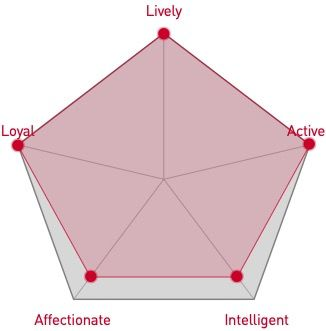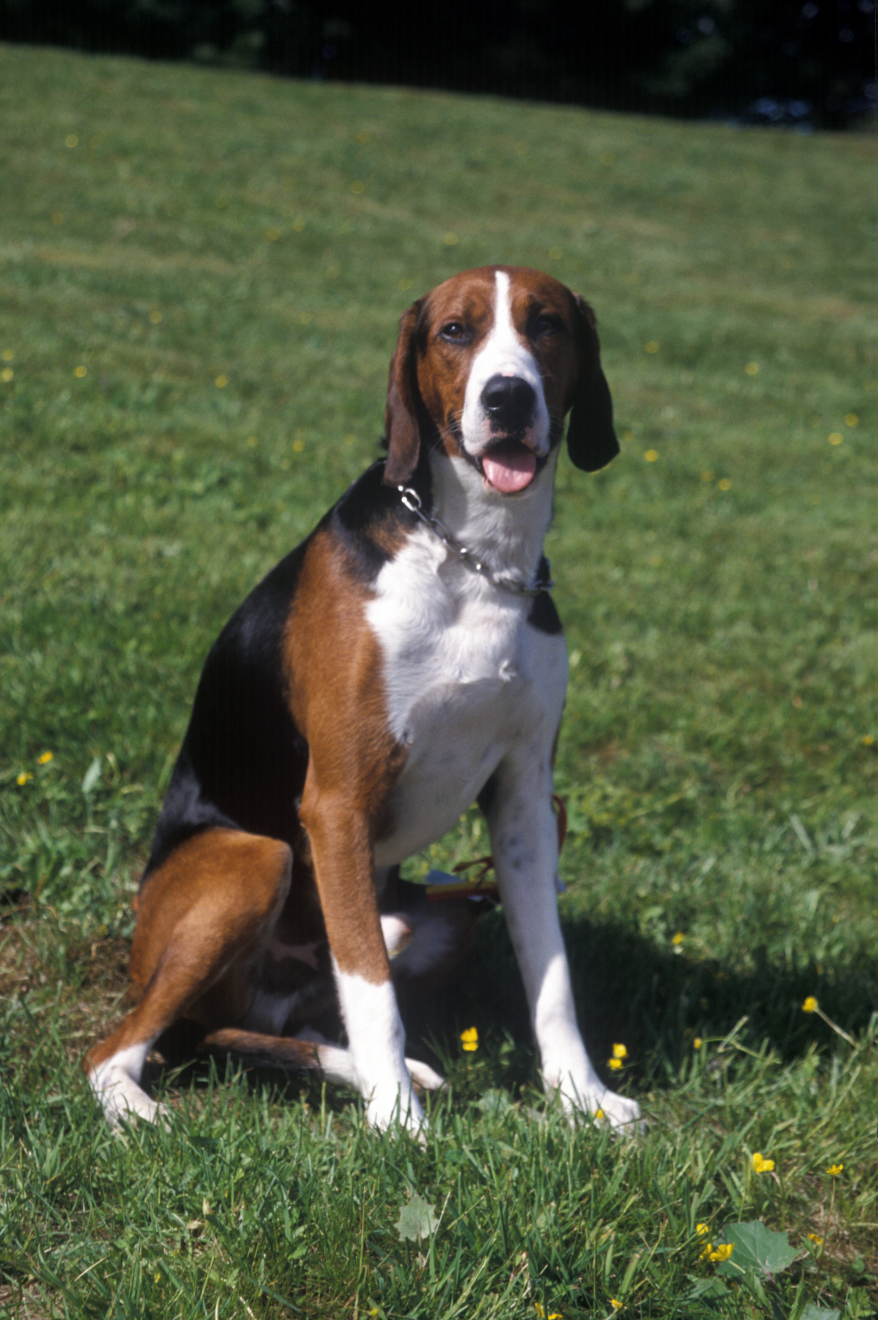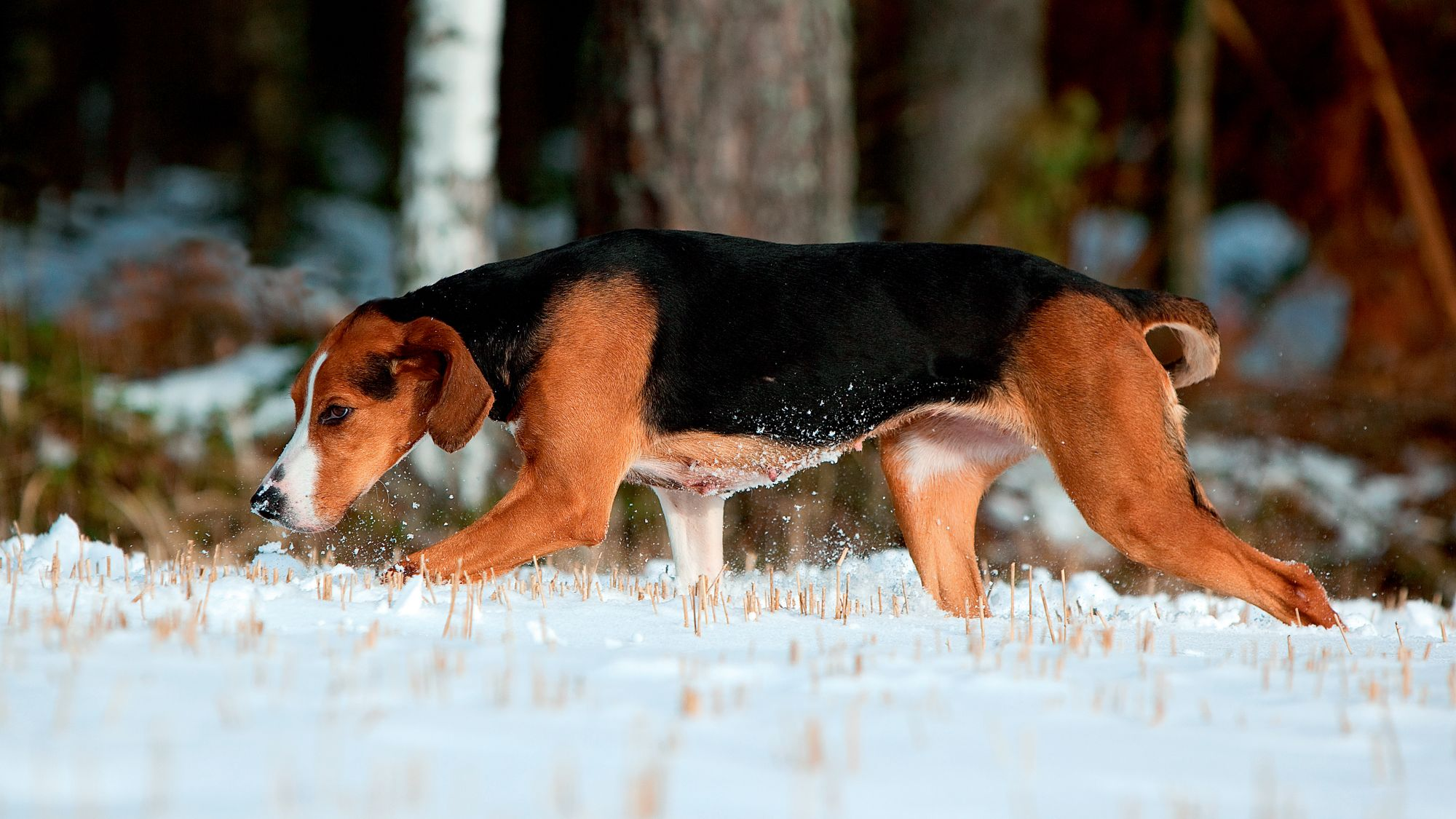
Let's talk Finnish Hounds
Finnish Hounds were developed as hunting dogs and in their native country the breed remains a popular choice. These tremendous tricolour dogs have dense double-layer coats to protect them from the elements – hello Finnish winters! – and energetic, hardy temperaments to match. Finnish Hounds are not widely known outside Finland and neighbouring Sweden but sporting prowess aside, the breed also has many other good qualities: They’re friendly and calm around humans, once trained—and providing they get enough exercise.Official name: Finnish Hound
Other names: Suomenajokoira, Finnish Bracke
Origins: Finland

| Drooling tendencies: |
|
Warm weather? |  |
| Shedding level: | Suited to apartment living? | ||
| Energy level (high, low, medium) *: | Medium | Family pet? * |
|
| Compatibility with other pets: |  |
Can stay alone? * |
* We advise against leaving pets alone for long stretches. Companionship can prevent emotional distress and destructive behaviour. Speak to your veterinarian for recommendations.
Every pet is different, even within a breed; this snapshot of this breed’s specifics should be taken as an indication.
For a happy, healthy and well-behaved pet, we recommend educating and socialising your pet as well as covering their basic welfare, social and behavioural needs.
Pets should never be left unsupervised with a child.
All domestic pets are sociable and prefer company. However, they can be taught to cope with solitude from an early age. Seek the advice of your veterinarian or trainer to help you do this.


| Baby age: | Birth to 2 months |
| Puppy age: | 2 to 12 months |
| Adult age: | 1 to 7 years |
| Mature age: | 7 to 10 years |
| Senior age: | From 10 years |

1/7
Get to know the Finnish Hound
All you need to know about the breed
Muscular and athletic Finnish Hounds look as if they were bred for the outdoors—probably because they were. The breed’s origins date back to the late 19th century, when hunters set out to create the perfect helper dog for Finnish conditions. The result is this hardy and athletic breed in shades of white, tan and black, with a distinctive mantle marking on their dense, smooth coats.
The dogs are renowned for their tracking and chasing skills, but also for being friendly, calm and affectionate around their humans. Training should be straightforward, with plenty of patience and a consistent approach, not to mention some snacks (taken out of their daily food rations of course).
Finnish Hounds do get on well with children—although of course, as with any large dog, they should not be left unattended with them. However, because of their strong prey instinct they are not recommended for households that include small pets such as guinea pigs or rabbits—not good news for the latter.
Finnish Hounds’ high energy levels and exercise needs also mean they are not suitable for novice owners—but with the right (read energetic) human, they will make a great team.

2/7
2 facts about Finnish Hounds
1. King of the Hounds
Every year in Finland, Finnish Hounds from across the country take part in the Kilpa championship, an event that dates back to 1937. The three best working dogs from each kennel district compete in division qualification trials, then the three best from each division compete for entry to Kilpa, along with the previous year’s champion. The winner of the final trial is crowned King of the Hounds (Ajokuningas).
2. Tricolour trend
The Finnish Hound’s tricolour coat is nowadays one of the breed’s most distinctive features, but when the breed specification was initially set out, reddish brown was defined as their approved colour. However, the dogs’ genetics had other ideas. Their tendency towards a black mantle was so strong that eventually, in the early 20th century, the specification was modified to include the black, tan and white that we know today.
History of the breed
The history of the Finnish Hound breed goes paw in paw with that of the Finnish Kennel Club, whose precursor Suomen Kennelblubi was established in the late 19th century, with the mission of developing a hunting hound ideally suited to Finnish conditions. After the country’s first dog shows, the first breed specification was established, with the modern-day breed definition based on a version set out in 1932.
Over the past century, the Finnish Hound breed has grown in popularity in their homeland – although is still rare elsewhere – establishing their place as a true Nordic hound, perfectly adapted to their role and environment. Finnish Hounds have a smooth double-layer coat that is water-resistant—useful when you come from a country sometimes referred to as “the land of a thousand lakes”.

4/7
From head to tail
Physical characteristics of Finnish Hounds
1. Body
Upright, regal bearing: Strong, lean body and long legs.
2. Head
Broad, domed head and large ears hanging flat to sides.
3. Coat
Sleek, dense, short coat in white, black and tan.

5/7
Things to look out for
From specific breed traits to a general health overview, here are some interesting facts about your Finnish Hound

6/7
Caring for your Finnish Hound
Grooming, training and exercise tips
Finnish Hounds’ coats do not need much grooming—just a brush from time to time. However, those magnificent ears will need some attention—check them for buildup of wax or debris, and clean and dry them carefully after any swims to help prevent ear infections. Their nails should also be trimmed regularly and frequent tooth brushing (daily if possible) is important for dental health. Finnish Hounds need a lot of exercise—ideally they should have a combination of long walks on the lead and chances to run and play in a safely enclosed space. Otherwise their instinctive prey drive will mean they may pick up a scent and just run and run. When it comes to training, start early, adopt a firm but kind and patient approach, and make sure any food rewards come out of your dog’s daily rations to avoid them putting on excess weight.7/7
All about Finnish Hounds
No—no dog breed is hypoallergenic. The Finnish Hound may be smooth-coated and not shed too much, but while that is good news for the vacuuming-averse pet owner, it doesn’t make any difference to allergies as it is dogs’ dander, or skin flakes, that cause allergic reactions, not their hair or fur.
Although they are not among the breeds most known for it, Airedale Terriers’ thick curly coats do shed, and they need regular grooming both by their owners and through trips to the doggy salon, to keep their black-and-tan curls in order.
translations.feature.breeds.otherbreeds
Read more on this topic

How your dog's nutrition needs change with age

How to adopt a dog

Things to consider before getting a dog
Sources
1 - Veterinary Centers of America https://vcahospitals.com/
2 - Royal Canin Dog Encyclopaedia. Ed 2010 and 2020
3 - Banfield Pet Hospital https://www.banfield.com/
4 - Royal Canin BHN Product Book
5 - American Kennel Club https://www.akc.org/


